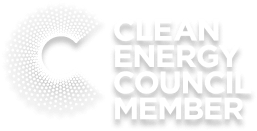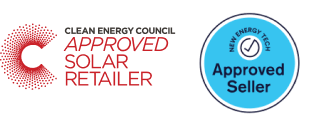If you’re thoughtful about adding a battery to your Victorian home to store rooftop solar, cut power bills, ride out outages, or join a Virtual Power Plant (VPP), one of the first belongings you’ll perceive is the phrase “CEC approved List”. That label matters the most for reliable solar battery in Victoria.
This blog post clarifies what the Clean Energy Council (CEC) approved battery list is, why it matters for Victorians, how to use it when selecting a solar battery, how it ties into Victorian and federal rebates and programs, and applied steps and checks to make certain your installation is qualified and safe.
Quick executive summary
- The Clean Energy Council (CEC) approved battery list is Australia’s industry-maintained register of lithium-based battery products that happen CEC’s best-practice safety and consumer-protection requirements. It’s used by governments, retailers as well as installers to approve that a battery model is satisfactory for rebate programs and safe for households.
- In Victoria, Solar Victoria entails batteries to be on its CEC Approved Battery Product List (which draws on CEC consents and adds program-specific necessities such as VPP-readiness and minimum size) for some loan/rebate schemes. Always check Solar Victoria’s product lists before buying.
- The federal Cheaper Home Batteries Program also involves the use of CEC-approved batteries, so using the CEC list is crucial for federal discounts too.
CEC Approved Battery List Guide for Australian Households
1. What is the CEC approved battery list?
The Clean Energy Council upholds a public list of batteries (and other solar products) that have been verified and evaluated against its Battery Assurance Program / Best Practice Guide. Products that pass are listed as “CEC approved batteries.”
The list emphases on lithium-ion battery devices and is intended to make certain models sold and installed in Australia comply with international safety standards and Australian potentials for performance, consumer protection, labelling, and documentation. The CEC list currently comprehends hundreds of models across several brands and form factors.
Why does the industry use it? Since state electricity networks, installers, and government programs trust on this self-governing registry to confirm constant safety standards across installations, it’s a real-world sole source of truth for approved hardware.
2. Why the CEC list matters for Victorians
There are three applied motives Victorians should care about CEC approval:
- Eligibility for state and federal programs. Solar Victoria’s product lists and the federal Cheaper Home Batteries Program want that batteries be on related approved lists (Solar Victoria’s list for Victorian programs; the federal program entails CEC accreditation/listing). If your battery isn’t on the permitted list at the time of installation, you risk losing eligibility for rebates/discounts or having your application refused.
- Safety and compliance. The CEC’s program is assembled around compliance with recognised battery safety standards (and the CEC Best Practice Guide). Using accepted products decreases the risk of mistakenly designed, unsafe or unsupported battery systems.
- Network and VPP interoperability. Solar Victoria has, in current programs, mandatory batteries to be VPP-ready or meet precise grid-support settings to enable aggregation. If you need to participate in a VPP (which may give you payments in return for dispatching energy), the approved product list is your starting point.

3. What’s on the CEC approved list and what isn’t?
On the list
- Lithium-ion battery energy storage systems (single units and modular systems) that have undertaken valuation against the CEC’s Best Practice Guide and applicable test reports.
- Batteries listed across several global brands and local suppliers. The list is updated occasionally as new products are approved.
Not on the list
- Non-lithium chemistries unless explicitly included by program updates.
- Products lacking the mandatory test reports, documentation or manufacturer declarations.
- Older models that have been de-listed due to protection concerns or changed product specs.
The CEC also circulates evidence on de-listings and how manufacturers can apply to have products added, so the list is aggressively managed.
4. How Solar Victoria uses product lists (Victoria-specific rules)
Solar Victoria preserves its own product lists for the Solar Homes program and associated offers. For battery incentives or loans, Solar Victoria’s battery product list comprises entitled battery systems and embraces program-specific necessities such as minimum capacity (e.g., 6 kWh for some offers), VPP compatibility, network settings, and required documentation. Solar Victoria’s product lists are updated frequently, always check the date on the list before you sign a quote or proceed.
Key Victorian considerations:
- Minimum battery capacity: Around Solar Victoria bids essential batteries of a minimum size (usually 6 kWh solar system or above for loans). Approve current program rules before committing.
- VPP-readiness and grid settings: Solar Victoria has emphasised products that can contribute in VPPs or have configurable grid support parameters. This supports grid constancy and can unlock forthcoming value for homeowners.
- Installer & retailer rules: Solar Victoria necessitates installations through an authorised solar panel retailer for program claims. That retailer must follow program invoicing and upload quotes to the Solar Victoria portal. Use the official retailer list.
5. The federal picture: Cheaper Home Batteries Program & Clean Energy Regulator
From 1 July, 2025 the federal Cheaper Home Batteries Program (and other federal incentives) necessitates battery systems and inverters to be qualified by the CEC and listed on the pertinent CEC approved product list at the time of installation.
This is a significant national overlay: whether you live in Victoria or anywhere else in Australia, CEC approval matters for federal rebates. The Clean Energy Regulator (CER) offers downloadable CEC approved battery lists (e.g., XLSX/CSV) that program administrators and retailers use when processing claims.
Real-world significance: even if Solar Victoria’s program has its own list, the federal scheme may also entail CEC listing, so select a battery that seems on both appropriate lists when you desire to access multiple discounts.
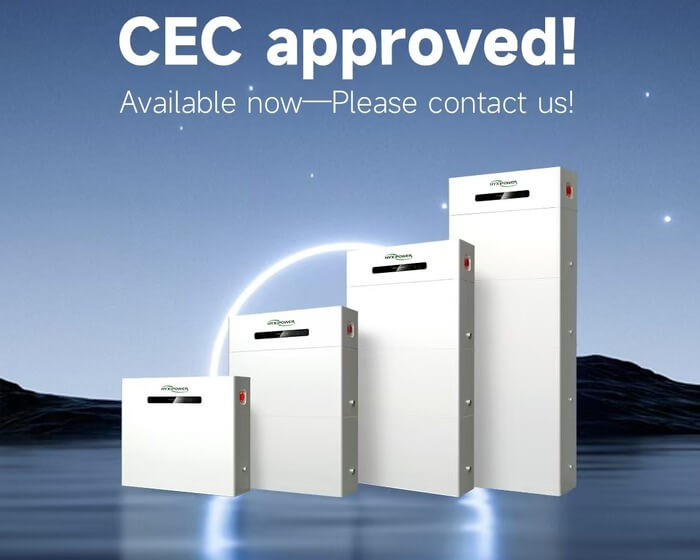
6. How to check whether a battery model is CEC approved (step-by-step)
- Start at the CEC approved batteries page. The CEC keeps a searchable list of approved batteries. Practice the search box or download the list/pdf if you desire.
- Confirm the exact model number and firmware variant. Manufacturers occasionally list multiple SKUs or versions; make sure the model on the quote matches the model on the CEC list as well.
- Cross-check Solar Victoria’s battery product list (if claiming a state loan or rebate). Solar Victoria circulates its own lists with program necessities (e.g., capacity, VPP readiness). Use the most updated Solar Victoria list.
- Check the Clean Energy Regulator (CER) spreadsheets if using a federal program. The CER also distributes CEC-approved battery data in machine-readable formats that nearly all installers use for validation.
- Ask your retailer/installer for proof. Solar Installers should be familiar with CEC and Solar Victoria lists, and will naturally comprise the approved model number and product documentation in your quote. Use an authorised solar panel retailer for Solar Victoria work.
7. What to look for in the “fine print”: safety, warranty, firmware and VPP
Being “CEC approved battery list” is a robust indicator of compliance, but there are product particulars you should check before you buy:
- Safety certificates and test reports: The CEC program needs manufacturers to supply test evidence. Ask to grasp these or check they were part of the CEC approval.
- Warranty terms (years and throughput): Two batteries with parallel capacity might have very diverse warranty coverage (e.g., 10 years vs 5 years, different cycle warranties). You should look at both calendar and cycle warranties.
- Firmware & upgrade policy: Some battery behaviour is controlled by firmware (e.g., capacity management, export limits). Ask how firmware updates are carried and whether updates could disturb suitability for a rebate or VPP contribution.
- Manufacturer support & local service: Is there local technical support or authorised service agents in Victoria? These substances are for long-term maintenance and any warranty claims.
- VPP participation and remote control settings: If Solar Victoria or your local network needs VPP readiness or grid-support settings, approve that the detailed model supports those functions and that the installer will configure them appropriately.
8. Common pitfalls and how to avoid them
- Buying before checking the lists — Don’t sign or pay a deposit on a battery until you or your installer confirms the thorough model appears on the relevant CEC and Solar Victoria lists at the time of installation. The lists are updated; approvals can change.
- Mismatched model numbers or SKUs — Quotes occasionally use shorthand product names. Make certain the exact model number (and firmware family, if applicable) is listed.
- Installer accreditation — For CEC/solar programs you frequently want an accredited installer/authorised retailer. Using an unapproved installer can void your rebate eligibility. Check the Solar Victoria authorised retailer list before proceeding further.
- Firmware/configuration not set for program rules — If the battery desires detailed grid support settings to be eligible for a state program (or for VPP participation), confirm the installer configures those settings and documents them for your claim.
9. Sample checklist to bring to quotes
When getting quotes from solar system installers, bring this checklist:
- Exact battery model and SKU (as written in the CEC and Solar Victoria lists).
- Confirmation that the battery meets the program minimum capacity (e.g., ≥6 kWh if required).
- Installer is an authorised Solar Victoria retailer (if appealing a Solar Victoria loan/rebate). Demand their Solar Victoria retailer ID.
- Printed authorization that the system will be organized with the important grid support/VPP parameters (if applicable).
- Warranty document and contact specifics for local service.
- Statement on how firmware updates are held and whether updates could variation performance or program eligibility.
- Timeline for upload/claiming of program paperwork (if installer is accountable for submitting claims).
10. Examples of how the lists are used in practice
- Installer validation: Solar Installers use the CEC list and the Solar Victoria product list to authenticate quotes and to confirm the product will be recognized for a loan or rebate claim. The Clean Energy Regulator and program administrators cross-check CEC listing during claim processing.
- Government procurement and rules: The federal Cheaper Home Batteries Program obviously necessitates use of products from the CEC list. State programs like Solar Victoria overlay further product and configuration requirements.
- Consumer due diligence: Consumers trust on the lists to avoid non-compliant or unsupported products, a decisive protection in a fast-moving market where various new battery SKUs appear.
11. How manufacturers get onto the CEC list (brief overview)
Manufacturers must apply to the CEC’s Products Program and supply test reports, assertions, and documentation showing compliance with the Best Practice Guide and applicable standards.
The CEC measures applications, and there are printed application forms, checklists and fees. Processing times can differ. If you’re comparing emerging or niche brands, ask whether they are in the application pipeline or previously permitted.
12. Where to find the CEC Approved Lists & key links (one-stop reference)
- Clean Energy Council — Approved batteries page (searchable list, guidance, how to apply): CEC Approved Batteries.
- Solar Victoria — Product lists & Solar Battery Buyers Guide (Victorian program necessities, buyer guidance, authorised retailers): Solar Victoria product lists and buyer guides.
- Clean Energy Regulator — CEC approved solar batteries data files (XLSX/CSV versions used by program administrators): CER’s CEC approved solar batteries page. (Clean Energy Regulator)
- Federal program eligibility (Cheaper Home Batteries Program) — DCCEEW program pages and eligibility guidance. (DCCEEW)
(Use those pages as your “single source of truth” when confirming eligibility for rebates and loans.)
13. Frequently asked questions (FAQ)
Q: If a battery isn’t on the CEC list, can it ever be installed in Victoria?
A: Yes, precisely, you can install non-listed equipment, but you may not be entitled to Solar Victoria incentives or federal discounts. For program claims, you must use permitted products. Constantly cross-check program rules before buying.
Q: Does CEC approval mean the battery is safe forever?
A: CEC approval specifies compliance at the time of listing based on abounding evidence. Manufacturers and products can change; the CEC can de-list products. That’s why you should authenticate the model and date of approval before installation.
Q: What if my battery model is listed in the CEC database but not on Solar Victoria’s product list?
A: You’ll prerequisite to meet both sets of necessities if you desire to claim Solar Victoria support. Solar Victoria’s list may enhance program-specific constraints (capacity, VPP settings). Speak to your authorised retailer to resolve the required gap.
Q: How often are the lists updated?
A: The CEC and Solar Victoria update their lists frequently. The CER also circulates updated XLSX/CSV files. Because these change, make definite you check the list close to the installation date.
14. Final practical tips (quick wins)
- Confirm product AND installer eligibility before paying deposits. Both matter.
- Ask for the CEC/Solar Victoria product ID on your quote, the solar installer should deliver it.
- Keep screenshots or PDFs of the CEC/Solar Victoria product list entrances that match your battery and the date you crisscross, these can be valuable if a product is later de-listed.
- Shop for long-term support and warranty — price isn’t everything; local service and a solid warranty are worth money over 10+ years.
- Consider VPP participation — if your preferred product supports it, VPPs may pay you small amounts for contributing flexibility to the grid. Check the model’s VPP competence and any revenue-sharing terms.
Final thoughts
The world of solar batteries is stimulating, but it’s also jam-packed and a bit puzzling. The CEC approved battery list is your cutoff to simplicity. It’s there to make certain you only install batteries that are safe, tested, and qualified for rebates in Victoria and nationwide.
For Victorian homeowners, the CEC approved battery list is more than an organizational details, it’s an applied safety and eligibility frontier. Whether you’re dashing a Solar Victoria loan, a federal deduction through the Cheaper Home Batteries Program, or basically need a safe and supported battery system, start with the CEC approved list and cross-check Solar Victoria’s product lists.
Ask your solar system installer to put the precise model and approval references in your quote, and preserve records of the lists you relied on. Do that, and you’ll evade the general traps and get a battery system that’s safe, supported, and eligible for accessible incentives.


